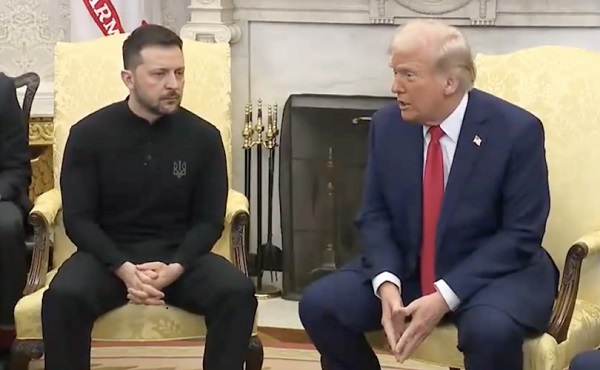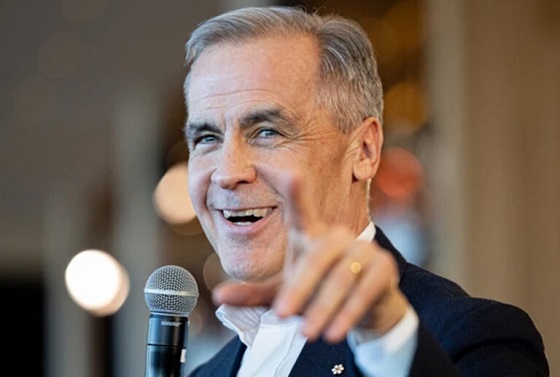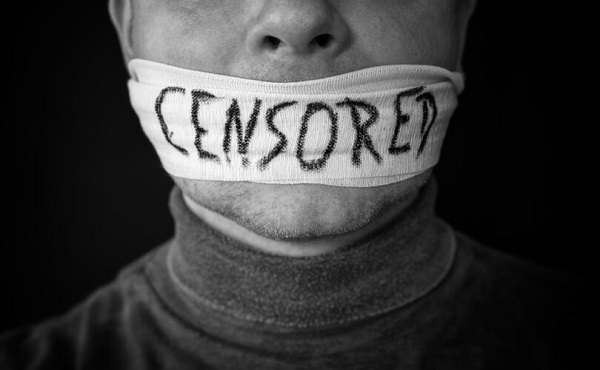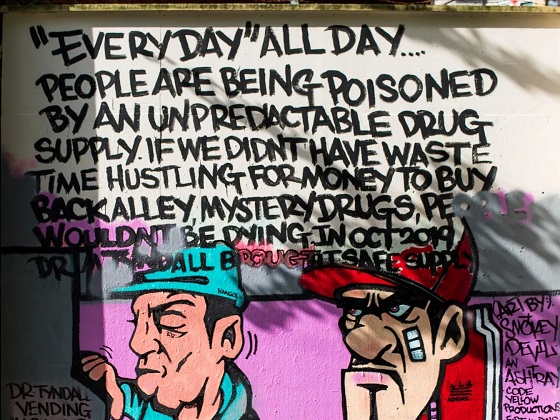International
Trump, Zelensky clash represents seismic shift in world politics

From LifeSiteNews
By Frank Wright
A meeting which began over a mineral deal and peace in Ukraine has developed into a historic shift in world politics.
“You don’t hold the cards,” President Donald Trump told Ukrainian President Volodymyr Zelensky at the White House on February 28.
When Zelensky retorted that he was “not playing,” Trump rebuked him. “Yes. Yes you are. You are gambling with the lives of millions of people.”
In an exchange which reframed the Ukraine war as a reckless gambit towards nuclear Armageddon, both Trump and Vice President JD Vance signaled an epochal shift away from the global consensus of the last forty years – and towards the interests of peace and of the American people.
“You’re gambling with World War III,” Trump continued, explaining to Zelensky that “…what you’re doing is very disrespectful to the country, this country that’s backed you far more than a lot of people say they should have.”
Friday’s White House meeting between the unelected leader of Ukraine is one of several recent visits and follows that of the U.K.’s Keir Starmer and France’s Emmanuel Macron.
Zelensky had nominally arrived to finalize a deal for U.S. rights over Ukrainian minerals, brokered by U.S. Secretary of State Marco Rubio. The deal was seen as a means of the U.S. recovering some of the claimed 350 billion dollars Trump has said that America has supplied to Ukraine in financial and military aid since February 2022.
Instead, Zelensky left immediately after being “kicked out” of the White House, the deal unsigned, and with his planned lunch reportedly “given to the interns” by Trump. Fox News reported White House insiders saying Zelensky was “begging to stay,” as a planned joint press conference was canceled.
Zelensky was congratulated on his “dignity” following the meeting, by the unelected European Union chief Ursula von der Leyen.
Immediate UK summit, ‘boots on the ground?’
Having refused to apologize, Zelensky flew to London for a pre-planned March 1 “summit” of pro-war leaders attended by NATO chief Mark Rutte, EU Chief Commissioner Ursula von der Leyen, U.K. Prime Minister Keir Starmer and the leaders of France, Italy and Poland.
The summit followed a “bizarre” flurry of identical social media posts sent by pro-war European leaders in support of Zelensky.
Statements were made following the meeting which suggested U.K. and EU support for Ukraine could continue in the absence of U.S. involvement – with the U.K. prime minister announcing afterwards that he is “ready to put boots on the ground” in Ukraine.
Starmer went on to announce a further $2.2 billion in “loans” to Ukraine to purchase missiles.
EU plan falls apart
The London Summit claimed to be making progress towards an EU-led ceasefire but concluded with no agreements in place.
Following the claim by France’s Macron that a truce in Ukraine had been proposed, the U.K. Armed Forces minister told Times Radio Monday morning that “No agreement has been made on what a truce looks like.”
Zelensky told U.K. reporters he was now “ready to sign” the minerals deal agreed with Donald Trump.
A further meeting has been scheduled. Following the remarks of the U.K’s Starmer, the leaders of France and Poland announced that neither nation would be sending troops to Ukraine – despite the assurances given by Starmer that a EU and U.K. “coalition of the willing” would do so.
The U.K.’s Ambassador to the U.S., Peter Mandelson, appeared to undermine Starmer’s position, calling for all leaders to give “unequivocal backing” of Trump’s initiative.
As the U.K.’s Daily Telegraph reported that Donald Trump’s meeting with Russian President Putin is being “fast tracked,” news also emerged that Trump is “discussing cutting all military aid to Ukraine,” with the Russians and Hungarians saying “Zelensky does not want peace.”
So severe is the crisis for Zelensky that a former staunch supporter of the proxy war, Senator Lindsey Graham, called for his resignation.
NATO without the US
The U.S. government is pursuing negotiations with the Russians independently of the European and British leadership, whose own summit quietly concluded that any future settlement in Ukraine ultimately relies on the U.S. to guarantee it.
News now emerges that the U.S. is seeking to reopen the NordStream pipelines in direct talks with the Russians.
Missiles fired from Ukraine into Russia rely on U.S.-led satellite intelligence and guidance. There is no realistic chance of unilateral military action in Ukraine by Europe’s depleted and scaled back militaries – a position underlined by EU statements calling for comprehensive rebuilding both of European defence and the industry required to restore it to realistic levels.
The picture emerging is one of a stark reality. There is no NATO absent U.S. commitment, and neither the U.K. nor the EU can act independently of the U.S. to confront a major power.
This too was foreshadowed on February 28, when Donald Trump asked Keir Starmer, “Could you take on Russia by yourselves?”
It is a serious question with an obvious answer, and it was followed by laughter.
Reality has bitten hard this weekend, showing how the U.S. leadership has not merely changed the color of the neckties worn in government, but is pursuing an historic break with decades of U.S. grand strategy.
British commentator Matt Goodwin said that the meeting signified a far wider geopolitical realignment, suggesting the U.K. and European leadership at the London summit had failed to recognize this historic shift.
UKRAINE: One lone European voice explaining how Trump is right. pic.twitter.com/QqcBbCrQGZ
— @amuse (@amuse) March 2, 2025
U.K. and European leaders may continue to generate dramatic headlines with bold talk and unrealistic initiatives, but this too is beginning to resemble an attempt to win a media war whilst the battle in reality is lost to them.
The Trump White House sees the war in Ukraine is seen as a needless waste of human life and money which “should never have happened.” Hungarian President Viktor Orbán also spoke out strongly in favor of peace, adding Ukraine was now in a “dire situation.”
U.S. negotiators now “talk normally” with those of the Russians, after a Biden administration which refused to speak to them at all for several years.
With Trump set to address Congress Tuesday night, an era-defining announcement may be on the cards.
Those cards are clearly held by the United States and no other nation in its sphere of influence. How will those cards be played? An earlier post by Trump on his Truth Social strongly suggests the U.S. will seek to establish and normalize trade with Russia regardless of the liberal-globalist regimes in Europe – all of whose leadership have invested their political fortunes in the war in Ukraine.
“We should spend less time worrying about Putin, and more time worrying about migrant rape gangs, drug lords, murderers, and people from mental institutions entering our Country – So that we don’t end up like Europe!” wrote Trump.
This is a direct hit on the British and European governments whose pursuit of the global consensus has led their nations into chaos. Trump is reshaping the world around the recognition of this reality, and of the ruin it has caused. With Trump, Speaker Mike Johnson and Elon Musk already suggesting an audit of all funding to Ukraine, the card of the severe corruption funded by this war may be played soon.
This moment comes alongside U.S. warnings that the enemy is not outside but within Europe, as its governments suppress free speech and refuse to respect the results of elections. A further scandal looms over how Ukrainian aid was spent, and where the weapons themselves went – with Tucker Carlson and even CBS news reporting that between one and “half” of all military equipment supplied has vanished on to the black market in Ukraine. How far were these pro-war, pro-Zelensky leaders invested in a nation described in the 2021 Pandora Papers as one of the most corrupt in the world?
There are now two visions of the future of the West, and only one has a winning hand. Tomorrow night, perhaps we shall see another Trump card thrown down.
You can watch all 46 minutes of the February 28 meeting between Trump, Vance and Zelensky here.
Automotive
Hyundai moves SUV production to U.S.

 MxM News
MxM News
Quick Hit:
Hyundai is responding swiftly to 47th President Donald Trump’s newly implemented auto tariffs by shifting key vehicle production from Mexico to the U.S. The automaker, heavily reliant on the American market, has formed a specialized task force and committed billions to American manufacturing, highlighting how Trump’s America First economic policies are already impacting global business decisions.
Key Details:
-
Hyundai has created a tariffs task force and is relocating Tucson SUV production from Mexico to Alabama.
-
Despite a 25% tariff on car imports that began April 3, Hyundai reported a 2% gain in Q1 operating profit and maintained earnings guidance.
-
Hyundai and Kia derive one-third of their global sales from the U.S., where two-thirds of their vehicles are imported.
Diving Deeper:
In a direct response to President Trump’s decisive new tariffs on imported automobiles, Hyundai announced Thursday it has mobilized a specialized task force to mitigate the financial impact of the new trade policy and confirmed production shifts of one of its top-selling models to the United States. The move underscores the gravity of the new 25% import tax and the economic leverage wielded by a White House that is now unambiguously prioritizing American industry.
Starting with its popular Tucson SUV, Hyundai is transitioning some manufacturing from Mexico to its Alabama facility. Additional consideration is being given to relocating production away from Seoul for other U.S.-bound vehicles, signaling that the company is bracing for the long-term implications of Trump’s tariffs.
This move comes as the 25% import tax on vehicles went into effect April 3, with a matching tariff on auto parts scheduled to hit May 3. Hyundai, which generates a full third of its global revenue from American consumers, knows it can’t afford to delay action. Notably, U.S. retail sales for Hyundai jumped 11% last quarter, as car buyers rushed to purchase vehicles before prices inevitably climb due to the tariff.
Despite the trade policy, Hyundai reported a 2% uptick in first-quarter operating profit and reaffirmed its earnings projections, indicating confidence in its ability to adapt. Yet the company isn’t taking chances. Ahead of the tariffs, Hyundai stockpiled over three months of inventory in U.S. markets, hoping to blunt the initial shock of the increased import costs.
In a significant show of good faith and commitment to U.S. manufacturing, Hyundai last month pledged a massive $21 billion investment into its new Georgia plant. That announcement was made during a visit to the White House, just days before President Trump unveiled the auto tariff policy — a strategic alignment with a pro-growth, pro-America agenda.
Still, the challenges are substantial. The global auto industry depends on complex, multi-country supply chains, and analysts warn that tariffs will force production costs higher. Hyundai is holding the line on pricing for now, promising to keep current model prices stable through June 2. After that, however, price adjustments are on the table, potentially passing the burden to consumers.
South Korea, which remains one of the largest exporters of automobiles to the U.S., is not standing idle. A South Korean delegation is scheduled to meet with U.S. trade officials in Washington Thursday, marking the start of negotiations that could redefine the two nations’ trade dynamics.
President Trump’s actions represent a sharp pivot from the era of global corporatism that defined trade under the Obama-Biden administration. Hyundai’s swift response proves that when the U.S. government puts its market power to work, foreign companies will move mountains — or at least entire assembly lines — to stay in the game.
conflict
Trump tells Zelensky: Accept peace or risk ‘losing the whole country’

 MxM News
MxM News
Quick Hit:
President Donald Trump warned Ukrainian President Volodymyr Zelensky that he risks losing Ukraine entirely if he continues resisting a peace settlement. Trump said Moscow is ready for peace, but Kyiv’s refusal to recognize Crimea as Russian territory could derail the effort.
Key Details:
- Trump said Zelensky “can have Peace or… lose the whole Country” and claimed Russia is ready to make a deal.
- Zelensky reiterated Ukraine’s refusal to recognize Russia’s occupation of Crimea, a key sticking point in current peace talks.
- White House press secretary Karoline Leavitt said Trump is frustrated and warned peace efforts may end if no deal is reached this week.
Diving Deeper:
President Trump issued a blunt warning to Ukrainian President Volodymyr Zelensky on Wednesday, saying the Ukrainian leader must choose between accepting peace or facing the collapse of his nation.
“He can have Peace or… fight for another three years before losing the whole Country,” Trump posted on Truth Social. The statement followed Zelensky’s firm declaration that Ukraine “will not legally recognize the [Russian] occupation of Crimea,” a stance at odds with a proposed peace plan under discussion in London between U.S., British, and European officials.
Trump blasted Zelensky’s comment as damaging, declaring, “Crimea was lost years ago under the auspices of President Barack Hussein Obama, and is not even a point of discussion.” The president added that such rhetoric undermines delicate peace negotiations.
Speaking from the Oval Office, Trump said, “I think Russia is ready,” referring to a peace deal, but questioned whether Ukraine is. Kyiv reportedly signed on to a Trump-proposed ceasefire more than a month ago. Trump hinted that progress has been stymied by Zelensky’s reluctance to compromise.
Despite Russian officials signaling a desire to prolong negotiations—with Kremlin spokesman Dmitry Peskov dismissing Trump’s efforts as “futile”—Trump maintained optimism, stating, “I think we have a deal with Russia… we have to get a deal with Zelensky.”
White House press secretary Karoline Leavitt said Trump’s patience is wearing thin. “President Zelensky has been trying to litigate this peace negotiation in the press, and that’s unacceptable,” she said, calling for closed-door diplomacy. “The American taxpayer has funded billions… enough is enough.”
Trump, 78, has consistently criticized Obama for allowing Russia’s 2014 annexation of Crimea to go unanswered. Now, under the Trump administration’s push for peace, a senior official revealed the U.S. is considering recognizing Crimea as Russian territory—a reversal of longstanding American policy based on the 1940 Welles Declaration.
Still, Trump refrained from criticizing Vladimir Putin directly, instead blaming Zelensky for inflammatory statements. “He has nothing to boast about!” Trump said, referencing a heated Feb. 28 Oval Office exchange with Zelensky and Vice President JD Vance.
“I have nothing to do with Russia,” Trump wrote, “but have much to do with wanting to save… five thousand Russian and Ukrainian soldiers a week.”
Trump warned that time is running out: “We are very close to a Deal, but the man with ‘no cards to play’ should now, finally, GET IT DONE.”
With London talks underway and pressure mounting, officials hinted that if no agreement is reached this week, the U.S. could walk away from its efforts in Eastern Europe. Asked whether Trump is ready to give up, Leavitt said, “Not by the end of the day today… but the President… needs to see this thing come to an end.”
-

 2025 Federal Election2 days ago
2025 Federal Election2 days agoConservatives promise to ban firing of Canadian federal workers based on COVID jab status
-

 Business1 day ago
Business1 day agoIs Government Inflation Reporting Accurate?
-

 2025 Federal Election1 day ago
2025 Federal Election1 day agoCarney’s Hidden Climate Finance Agenda
-

 Environment2 days ago
Environment2 days agoExperiments to dim sunlight will soon be approved by UK government: report
-

 International2 days ago
International2 days agoPope Francis Got Canadian History Wrong
-

 Censorship Industrial Complex2 days ago
Censorship Industrial Complex2 days agoIs free speech over in the UK? Government censorship reaches frightening new levels
-

 2025 Federal Election1 day ago
2025 Federal Election1 day agoWhen it comes to pipelines, Carney’s words flow both ways
-

 2025 Federal Election1 day ago
2025 Federal Election1 day agoStudy links B.C.’s drug policies to more overdoses, but researchers urge caution





